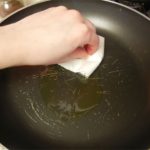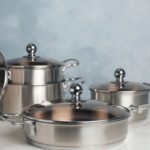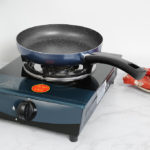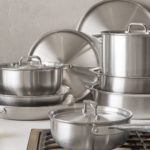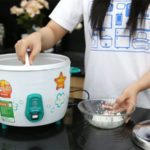There are currently many types of pots and pans made with different materials to serve different cooking purposes. Therefore, each type of pot and pan will have its own way of use. However, not every homemaker pays attention to this but only values the convenience of cooking, causing pots and pans to deteriorate quickly and the health of the family to be affected.
Here are some mistakes to avoid when using non-stick pans to protect your cookware and ensure safety for your family.
Cooking at too high temperatures
If you observe carefully, you will see that many manufacturers recommend users to pay attention to the temperature when cooking with non-stick pans. High temperatures are harmful to the non-stick coating, and prolonged exposure to high temperatures can damage the surface of the pan.
In addition, depending on the type of non-stick coating (cheap or expensive pan, good or poor quality non-stick coating), cooking with high heat can produce harmful substances for health.

You need to adjust the temperature below or at the recommended level, and never let the temperature exceed the allowable limit as it will affect the lifespan of the pan and the quality and safety of the food.
Preheating the pan without oil
Preheating a cast iron pan before adding oil is a wise way to ensure even cooking, but this should not be applied to non-stick pans.
This is the first and most common mistake that reduces the lifespan of non-stick pans. You should add oil or butter to the pan as soon as you put it on the stove. Heating an empty pan will release toxic fumes, which over time will affect the non-stick coating.
Using a non-stick spray
Using a non-stick spray for non-stick pots and pans is a big mistake. It may be convenient for baking trays or molds, but it should not be used for non-stick pans.
After a period of using the spray, the oil from the spray will accumulate on the surface of the pan when heated, and it will be difficult to clean, affecting the longevity of the pan. This usually happens around the edges of the pan.
The non-stick surface of the pan is already smooth enough to prevent stir-fried or fried food from sticking, so you don’t need to use this spray.
Using metal utensils, sharp objects
This should be avoided both in cooking and cleaning the pan. Using sharp objects such as knives, metal spoons, chopsticks to flip, pour, scrape food out of the pan or using a metal scouring pad to clean the pan can cause scratches, damage, and peeling of the non-stick surface in a short time.
When the non-stick layers on the pan start to peel or wear out, it is best to replace them. Because when they are peeled off, the pan’s non-stick efficiency will be reduced, and it can be harmful to health. If you continue to use it for cooking, the peeled non-stick debris can mix into your food and enter your body, causing poisoning.
If you don’t want that to happen to you, you should give up the habit of cutting food in the pan. Avoid using metal spoons or chopsticks for frying or stir-frying. Only use wooden kitchen utensils to prepare food with non-stick pans.
Clean the pan after cooking
One of the common habits of housewives is to clean the pan immediately after cooking. This is a big mistake because pouring cold water immediately after boiling will cause the pan to warp and reduce its lifespan quickly.
Therefore, the advice from experts is that you should wait for the pan to cool completely before starting the cleaning process.
Cooking acidic food
For acidic foods such as lemons, tomatoes, it is recommended to avoid using non-stick pans for cooking. Because the high acid content in these foods can easily peel off the non-stick coating.
Stacking the pans carelessly
After cleaning, the next step is to store your non-stick pans smartly. If possible, avoid stacking them on top of each other, leading to friction and scratching of the delicate non-stick surface.
If you need to stack the pans, place a soft and clean cloth on top and bottom to prevent scratching the pan. Another way is to insert a piece of paper between your non-stick pans. However, hanging the pans is the best choice for storage.
According to VTC
Transforming a Regular and Old Pan into Non-Stick Cookware
Learn how to transform your regular and old non-stick pans into fresh, new non-stick ones with a few easy steps. With this cost-effective kitchen makeover, you can enjoy all the amazing benefits of a non-stick cooking experience without the need to purchase new pans.

























